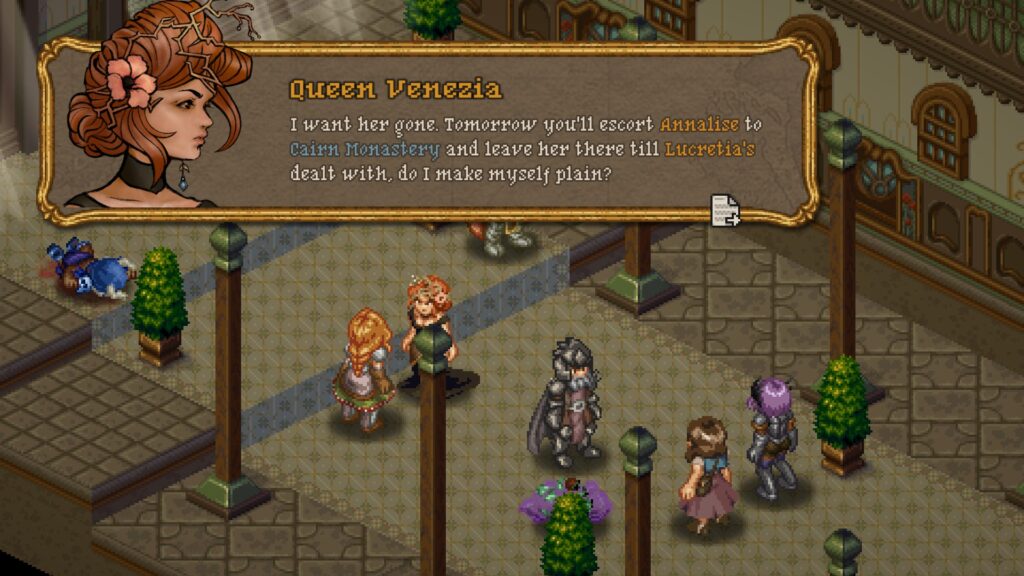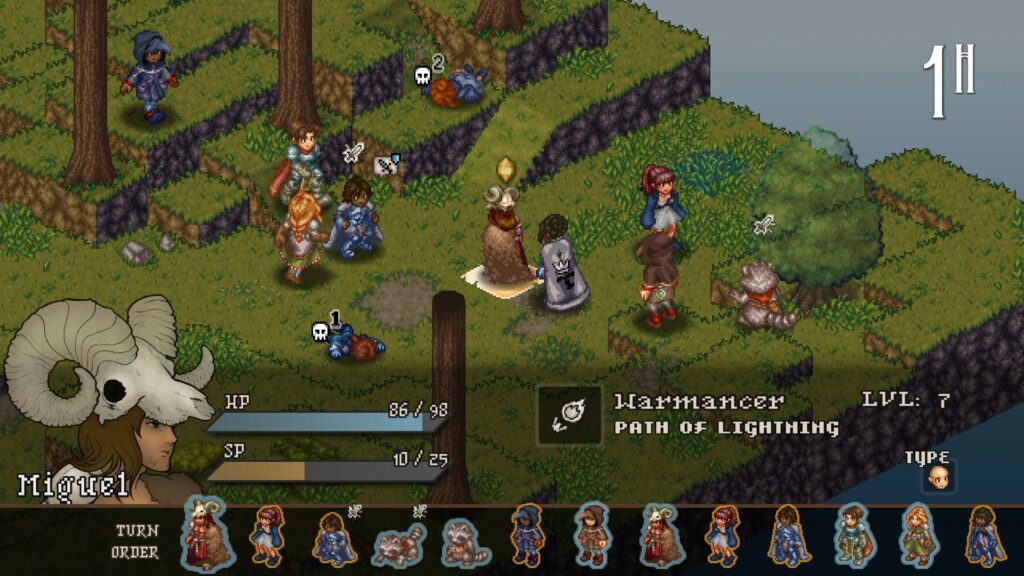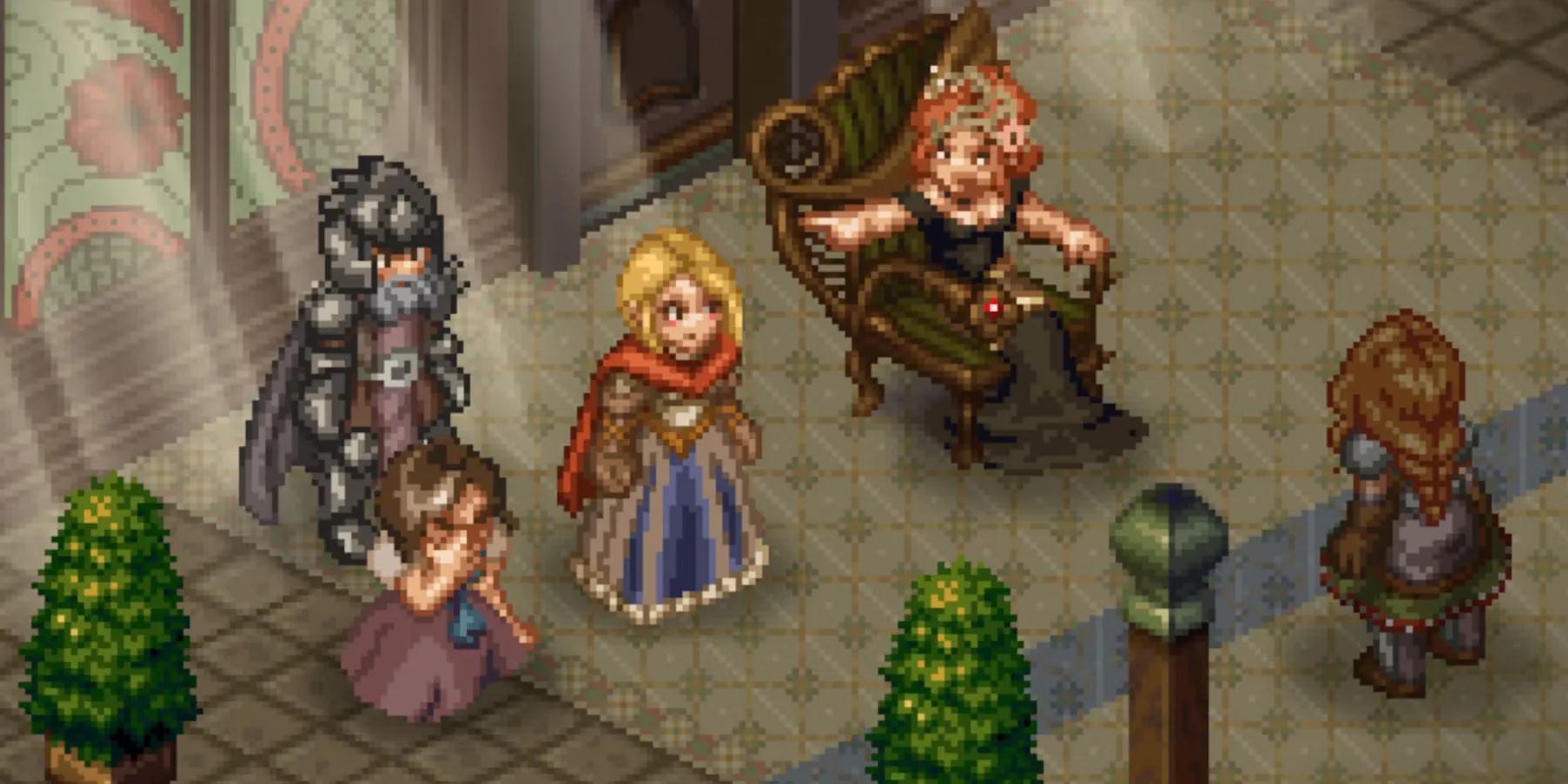Tactical RPGs have been enjoying a strong revival in recent years, and Arcadian Atlas aims to tap into this. It is strongly influenced by the ‘90s classics of the genre – particularly 1997’s Final Fantasy Tactics – but struggles to make a case for its own existence. Old-school tactical RPG fans may enjoy it, but others are likely to find its small-scale skirmishes and story to be monotonous and uninspiring.
Those who originally backed Arcadian Atlas must be relieved that it is seeing the light of day at all. The game was funded to the tune of $90,000 back in 2016, but progress was slow. This year, Texas developers Twin Otter have finally got their dream game over the line, with the help of Colorado-based publishers Serenity Forge.
During the intro, the game’s broad theme quickly becomes clear. Arcadia is a fantasy world which has been thrown into a dynastic struggle for control. While magic exists, the story is initially focused more on this grounded human affair. The central characters are Vashti and Desmond, young fighters who eventually become enlisted in opposing factions of the conflict.
Unfortunately, Arcadian Atlas does not put its best foot forward. The opening hour reflects the rich backstory that Twin Otter has created, but is also deeply confusing. A host of characters are introduced in quick succession with little context, and plot threads both large (the nature of the war) and small (Vashti and Desmond’s relationship) are unclear and therefore uninvolving. Things do become clearer in time, but Arcadian Atlas fumbles its best chance to fire the imagination.

Gameplay is a little more engaging. The broadly linear story campaign is fundamentally about turn-based tactical battles on small, pixel art dioramas, interspersed with cutscenes. For each fight, the player chooses a squad – typically of five members – from a larger pool of troops. Key characters can’t die permanently, but incidental ones fight at risk of permadeath. Turn order is dictated by an initiative value, and each battle has a specific objective – usually this is simply to defeat every enemy in the area.
Battles in Arcadian Atlas are functional but never particularly exciting or challenging. The environments are cramped and devoid of interactive objects, the four basic classes are blandly unimaginative, and combat proceeds quite slowly. Even when victory is inevitable, each battle must be fought to the end, gradually wearing down the large health pools of the final stragglers.
“Role-playing” is obviously an elastic term and tactical RPGs are rarely seen as fully-fledged role-playing experiences. Here, the role-playing is slight. There is no character creation, little scope to explore, and few decisions to make. Surprisingly, there is no formal experience system – characters will gain a level after a battle, regardless of what their contribution was.
Credit must go to Twin Otter for the game’s aesthetic. The character sprites are surprisingly expressive, considering the small number of pixels they have to work with. In cutscenes, movements of the eyes add extra emotional weight to key moments. The game’s jazzy soundtrack is also quite likeable, even if the one battle theme quickly becomes overplayed.

It is difficult to escape how extensively Twin Otter has cribbed from Final Fantasy Tactics. The class system, combat model, plot, and interface are all strongly derivative of that game. In a way this makes sense, because Square’s game is so revered and it is still only available on PS1, the PSP, and mobile devices. On the other hand, Arcadian Atlas feels antiquated as a result. Its menus are fussy to navigate with either controller or mouse and keyboard, and its combat is largely oblivious to the advancements in tactical games in recent years.
There is a crucial area in which Arcadian Atlas suffers when compared with Final Fantasy Tactics. Square’s game set its battles on 3D dioramas which could be freely rotated to get a better view of the action. Arcadian Atlas lacks these, instead opting for a fully 2D, isometric appearance. This not only gives the game a more flat look, but also sometimes creates confusion as to where characters are within the space. It can lead to wrong moves and misfired abilities, and compels Twin Otter to limit the complexity of the battlefields – because height variation in the foreground obscures the action.
Arcadian Atlas seems intended to serve quite a small audience, one familiar with the Japanese tactical RPGs of the 1990s. For those players, its backwards-looking systems may be an asset. They are likely to enjoy the game, especially if they find a way to connect with its story. For other players, Arcadian Atlas is likely to seem monotonous and old-fashioned – those players may get more tactical satisfaction elsewhere.





